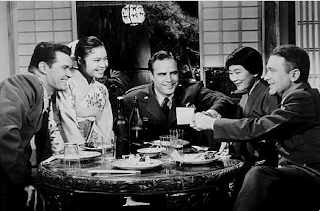If you are in Berlin in the coming weeks, I recommend that you check out Bettina Lockeman's exhibition of photographs that she took in Japan between April and July 2006. The exhibition is called Contact Zone and you can find a preview of the exhibition here and here. The photographs for the exhibition were all shot on black and white film, which she tells me is becoming a scarcer and scarcer commodity these days. While Bettina was in Japan, she also kept a blog of the digital photographs she took. Here's a link to her first blog entry.
Bettina's main project when she was in Japan was her research about European photographers in Japan. It was fascinating to read some of her material and see how, often without even realizing it, many photographers are unable to shed certain stereotypes about Japan. Somehow, a collection of photographs labeled 'Japan' just isn't complete without shots of torii and the cosplay kids in Harajuku.
It's pretty clear that in her black and white photographs, Bettina tried to steer clear of these pitfalls. Armed with a guidebook to architecture in Tokyo, she sought out urban landscapes to photograph. As always, I am impressed by her eye for perspective. Her photographs show us everyday cityscapes that we might otherwise consign to the background of our day, and asks us to look again at the details of the world around us.
Loris Gallery, Berlin, 23 February - 29 March 2008
© Catherine Munroe Hotes 2008
Bettina's main project when she was in Japan was her research about European photographers in Japan. It was fascinating to read some of her material and see how, often without even realizing it, many photographers are unable to shed certain stereotypes about Japan. Somehow, a collection of photographs labeled 'Japan' just isn't complete without shots of torii and the cosplay kids in Harajuku.
It's pretty clear that in her black and white photographs, Bettina tried to steer clear of these pitfalls. Armed with a guidebook to architecture in Tokyo, she sought out urban landscapes to photograph. As always, I am impressed by her eye for perspective. Her photographs show us everyday cityscapes that we might otherwise consign to the background of our day, and asks us to look again at the details of the world around us.
Loris Gallery, Berlin, 23 February - 29 March 2008
© Catherine Munroe Hotes 2008









